I’d like to introduce you to the gorgeous world of Japanese Buddhist wood-carving. There are no mega-churches in the country, temples are small, and only are willing to work with a few selected carpenters and artisans to repair their temples and to carve the sacred deities to be used for worship. At Asia Art Tours we work with two Miyamoto Gakyu and Takuo Hasegawa . Below you can find our interview with Takuo san.
On your next visit to Japan please contact us if you would like to meet with, participate in a private workshop or purchase the work of these incredible artisans. Contact Asia Art Tours today, Matt@asiaartours.com
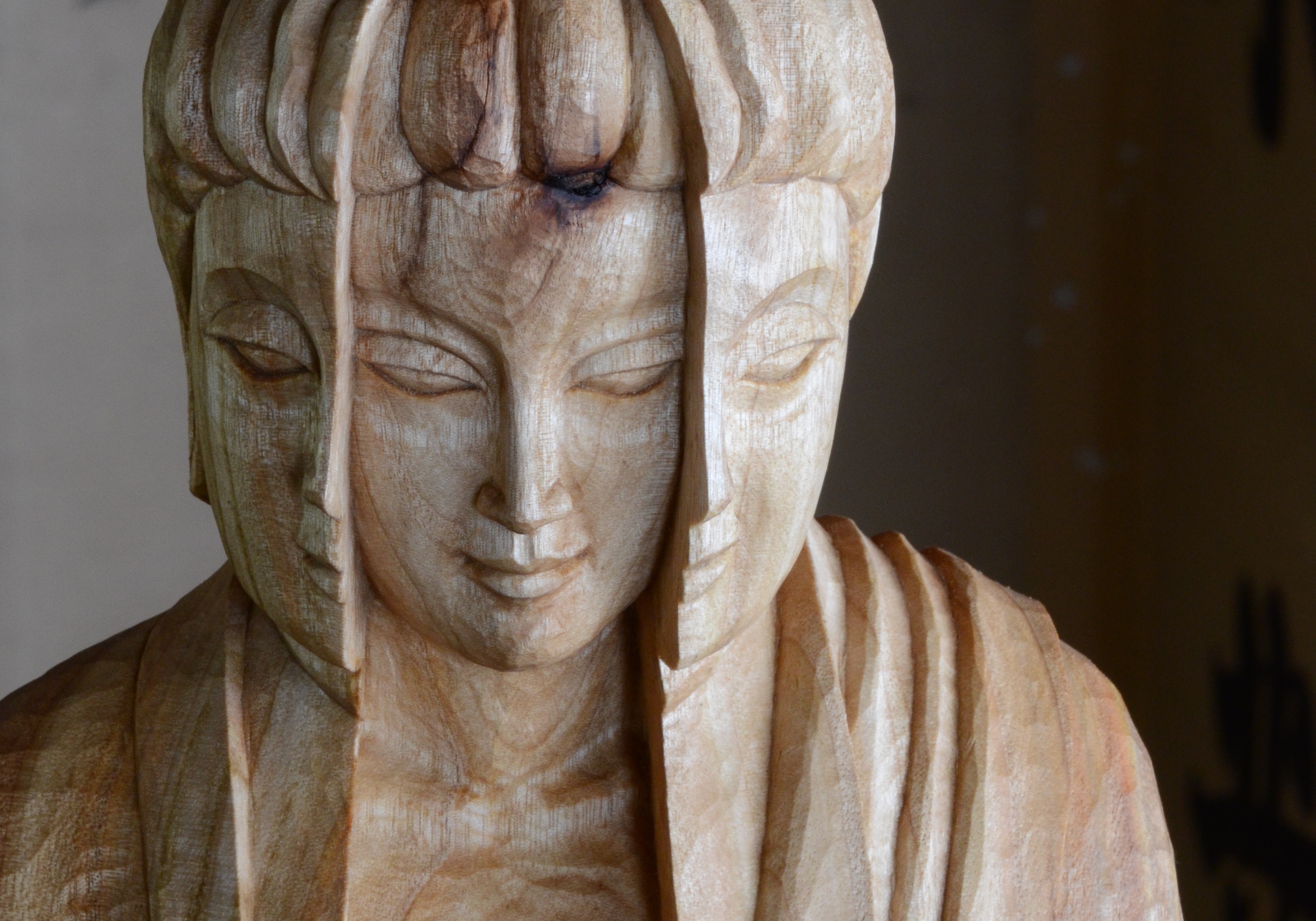
Close up from Wood Carving of Takuo Hasegawa
Question 1: Could you tell us a bit about Kanazawa and Buddhism, what is the connection historically between the two?
Kanazawa is well known to Buddhist followers, and Zen Buddhism is quite famous in this part of Japan.
Ishikawa prefecture, and the Hokuriku region generally, is an area where Zen pioneers once lived. The Buddhist monk Dogen (1200-1253) spent many years learning Buddhism in Kyoto. Because his ideas about Buddhism conflicted with those of many monks there, he decided to journey to China to further his studies of Zen Buddhism and also search for pure Buddhism in a non-hierarchical temple system. In China he experienced enlightenment (satori), then returned to Kyoto, where this time the monks forced him to leave. He traveled to Echizen in what is now Fukui prefecture and founded Eiheiji Temple, the most important Zen temple in Hokuriku and one of the most famous Zen temples in Japan. One of Dogen’s disciples came to what is now Kanazawa and founded Daijōji Temple. Another disciple founded Sōjiji Temple in the Noto Peninsula. Now, both Eiheiji and Sōjiji are the two head temples of the Soto sect of Zen Buddhism. https://en.wikipedia.org/wiki/Dōgen
Kanazawa has been heavily influenced by Zen Buddhism. During the time of the Kaga domain (1583-1868), the Maeda clan that ruled it strongly supported Zen Buddhism. D.T. Suzuki, who was born in Kanazawa in 1870, helped Zen Buddhism gain a larger following, particularly among intellectuals and artists outside of Japan. I was very influenced him. When I was backpacking.
C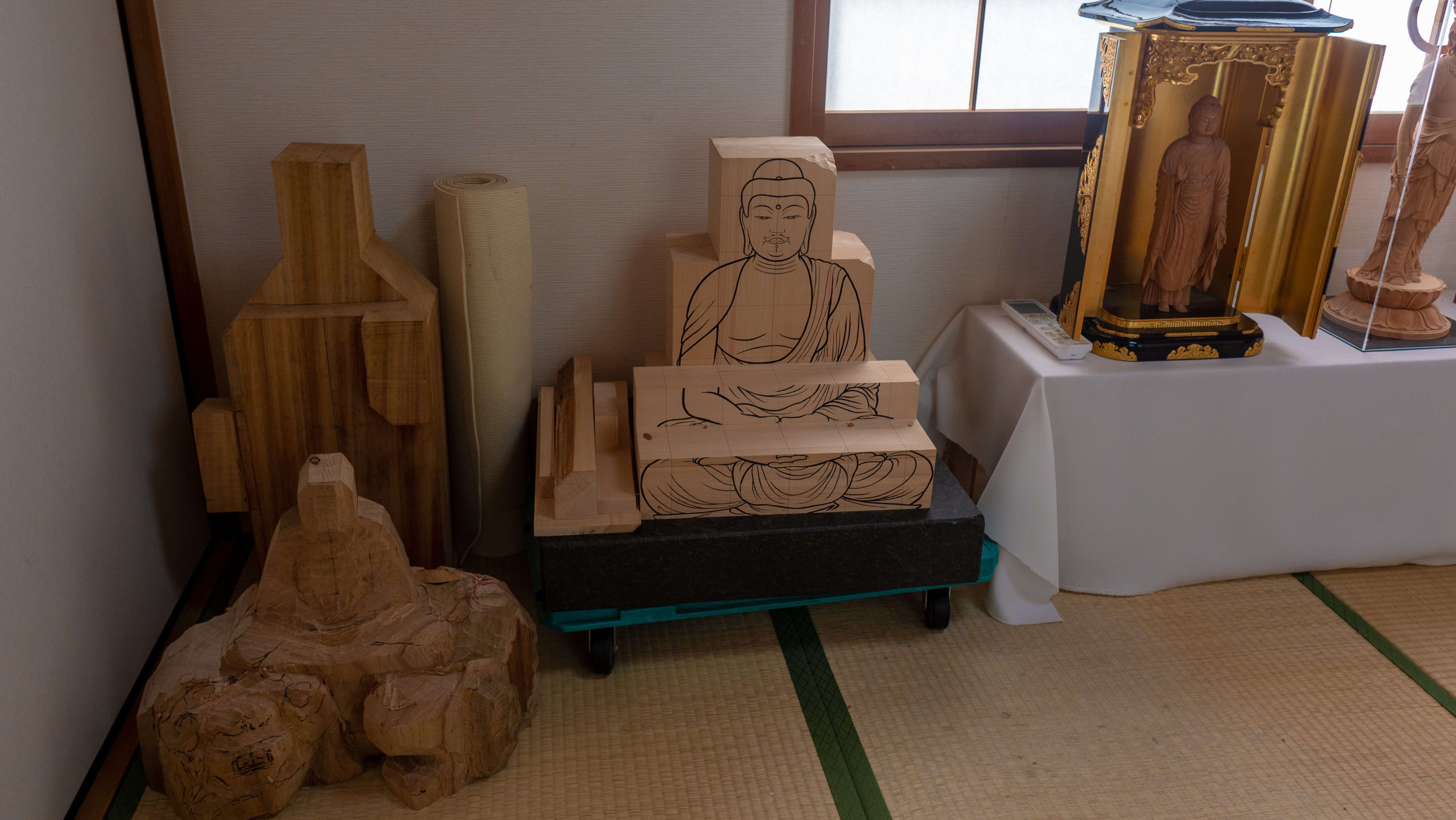
Carving Models in the workshop of Miyamoto Gakyu
Question 2: What was your own journey into Buddhism? Why did you decide to deeply practice Buddhism?
I developed an interest in Buddhism as a spiritual way forward when I was younger. I had doubts about materialism and wanted to find a better way to live, a life that I wouldn’t feel I was wasting.
When I was backpacking around the world in my early twenties, I looked for a better way to live. Afterwards I discovered some Buddhism and oriental philosophy and D.T. Suzuki’s books and they brought about profound changes in my life. Reading them made me happy, and they answered many of the questions I had about my spiritual journey – for example, what is freedom, nature, culture, human and even Japan? and who am I? Why do people hate and discriminate? And how can I find peace in this life? As I looked more deeply into Zen I found a small light that shined on all of these questions. There was harmony there and unity. Zen was a natural fit for me. That was around ten years ago. Now, every morning at home I practice zazen – similar to, but not the same as, meditation – and once a week take part in zazen at temples. I read a lot about Buddhism, too.
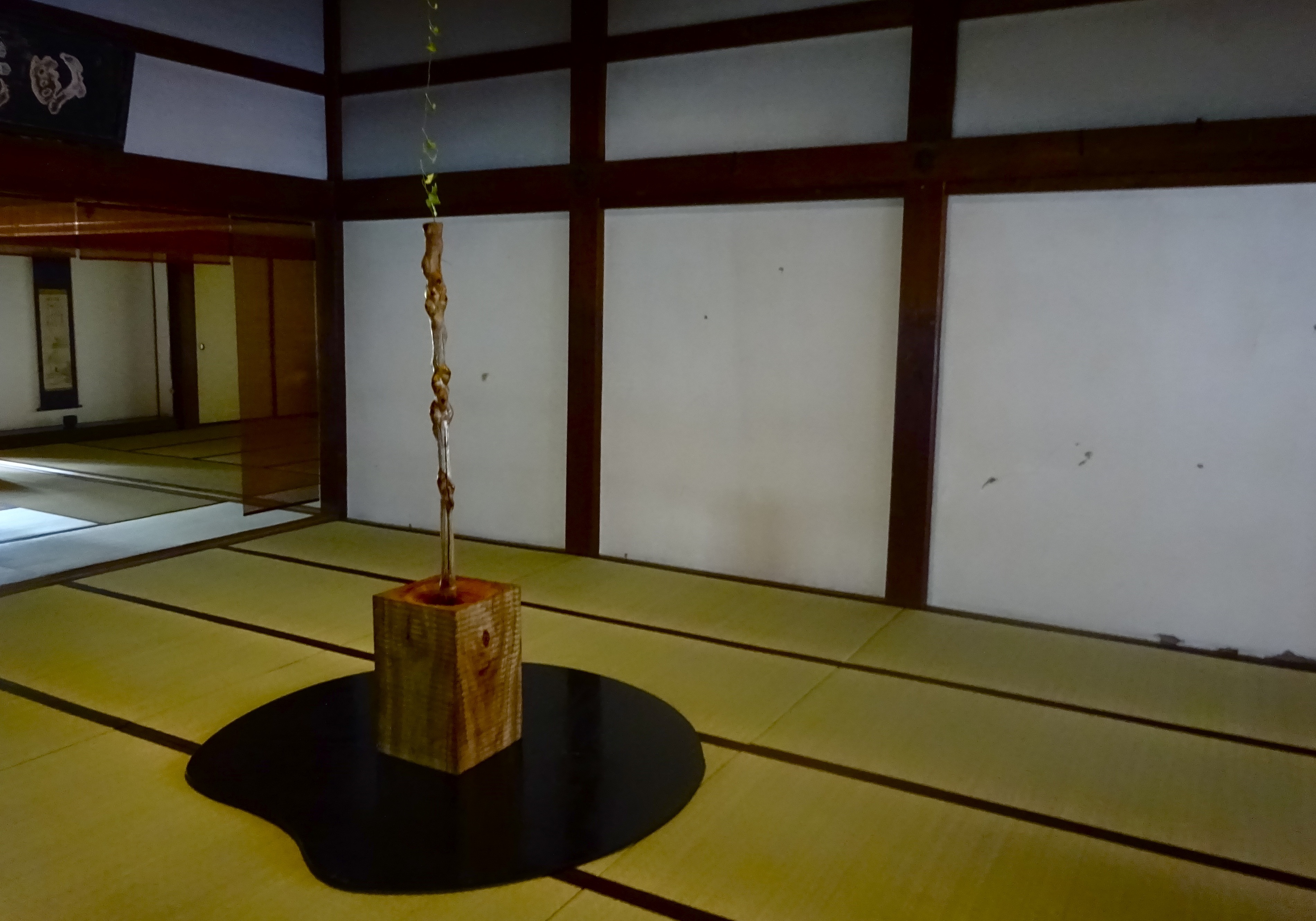 Wood Caring from Takuo Hasegawa
Wood Caring from Takuo Hasegawa
Question 3: Can you tell us about your art and how it helps you express Buddhism?
In Shintoism, which is Japan’s native religion – both primitive and animistic – there is a concept called ki, which means “energy.” Shintoism easily and often mixes with Buddhism. I like the openness of Buddhism and the fact that, as with Shintoism, it can accommodate a variety of primitive religions. Indian Buddhism, Tibetan Buddhism, and Thai Buddhism also do this.
My art expresses the Japanese idea of wabi-sabi as well as the Buddhist idea of emptiness. I value in my life and my art both the traditional idea of wabi-sabi as a source of beauty and also emptiness as an ideal – the opposite of the material trappings of our modern, capitalist age. My artistic sense is rooted in both Buddhism and Shintoism, which is strongly connected to nature and the idea that spirits exist in everything. For example, when I work with a block of wood to make a sculpture, the idea that guides me, which is a mix of Shinto and Buddhist, is that I’m drawing out the spirit of the wood, and every work of art I make is a representation of that spirit. I’ve drawn out the ki of the wood, and also my own ki. It’s a very Japanese idea, very traditional, very embedded in the Japanese unconscious mind. Many Japanese artists share this aesthetic, yet many others have been influenced by Western culture and are unfamiliar with it – or at least they don’t incorporate it into their art.
 Asia Art Tours CEO Mat Dagher-Margosian with Miyamoto Gaku in his studio.
Asia Art Tours CEO Mat Dagher-Margosian with Miyamoto Gaku in his studio.
Question 4: What are some of the questions you are trying to answer with your art?What answers for Buddhism or life have you found through practicing art?
We are living life and getting experience with whole body, not just head. Sometime, knowledge makes divide realty and ideal. I think art express more direct. And thought of Buddhist doesn’t separate body and mind.
Dogen said that “To study the way of awakening means to study yourself.” It also means letting go of one’s ego and forgetting one’s self. This is what I try to do in my art, in zazen, and in the way I live my life. It’s a way of trying to find inner peace. When people see my artwork, they will hopefully see no ego and nothing of myself – only the energy and peace I’ve drawn from the wood and the wabi-sabi sense of beauty it expresses. These ideas combine Buddhist and Shinto beliefs. My art and the way I try to live, then, is my response to the present material age. I don’t consciously try to separate my art from my way of living. They incorporate and reflect each other.
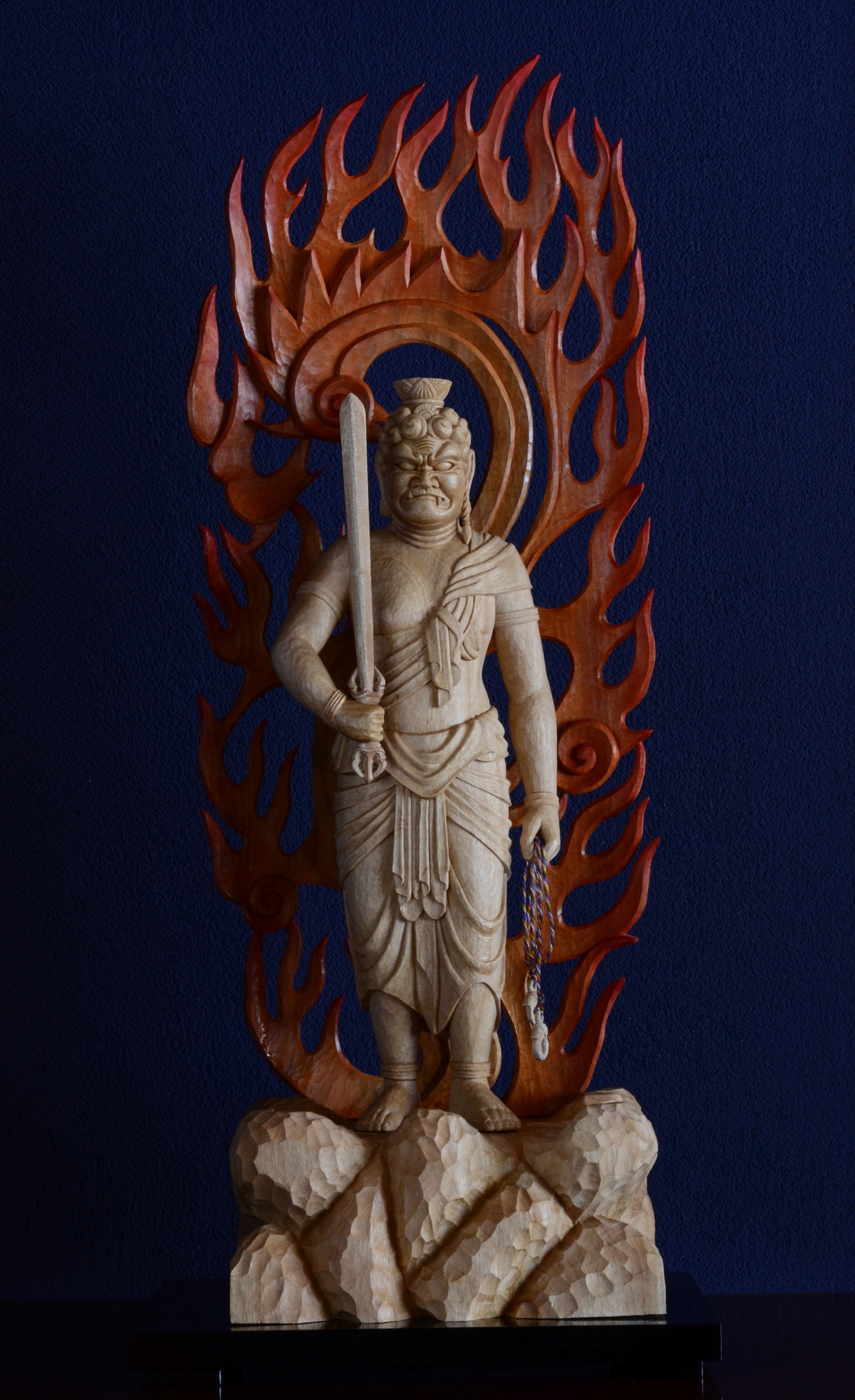 Buddhist Carving from Takuo Hasegawa
Buddhist Carving from Takuo Hasegawa
Question 5: You run a very successful Izakaya, are a serious artist and are a devoted Buddhist. Can you tell me how do you find balance and time for all three? How do you strike a balance between business and the spiritual?
Zen promotes this balance in our lives. Zen monks work hard, waking up early, doing zazen, chanting, cleaning their living quarters and the temple grounds, cooking, and so on. The purpose of Buddhist training is to study one’s self with the goal of becoming awakened. These are part of Buddhist practice, a part of learning to be more disciplined so that you don’t waste your life or lose your way. It’s a way of finding inner peace. What we do in daily life is important. We can’t control our minds or our spirits, but we can control our breathing and our body’s posture, and do so in a right and conscious way. This helps clear the mind and bring inner peace.
These ideas are central to zazen. I follow them when I run my izakaya, and of course I try to create an peaceful atmosphere that allows my customers to experience the same thing. It’s part of my life purpose. Over the last ten year my Buddhist practice has helped me strike this balance. I like the ways my spiritual life combines with my real life, where I run an izakaya. I don’t need to become a monk to be spiritual and to find inner peace. No matter what I do, I focus on the here and now – on being awake.
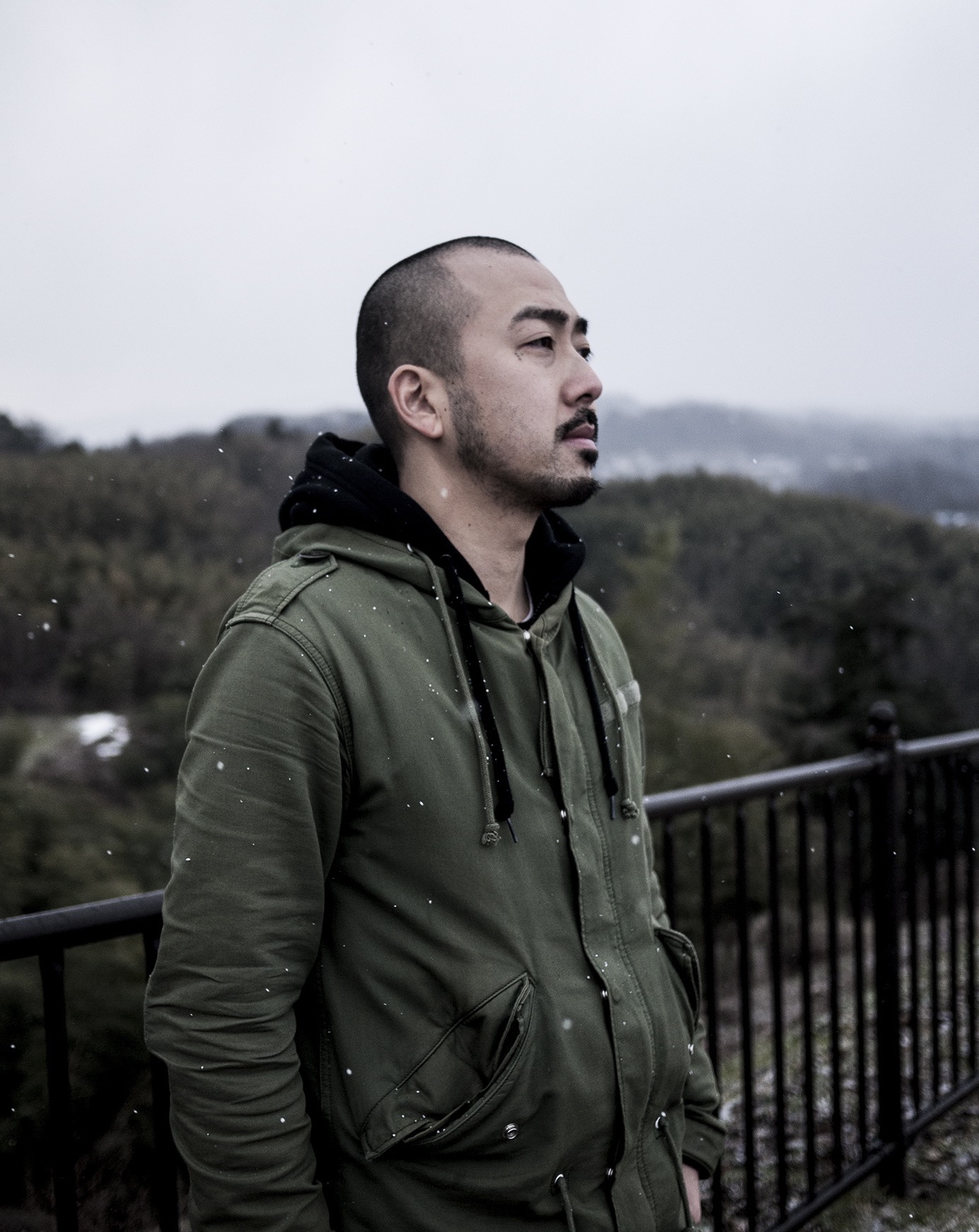
Profile Photo of Takuo Hasegawa in Winter.

